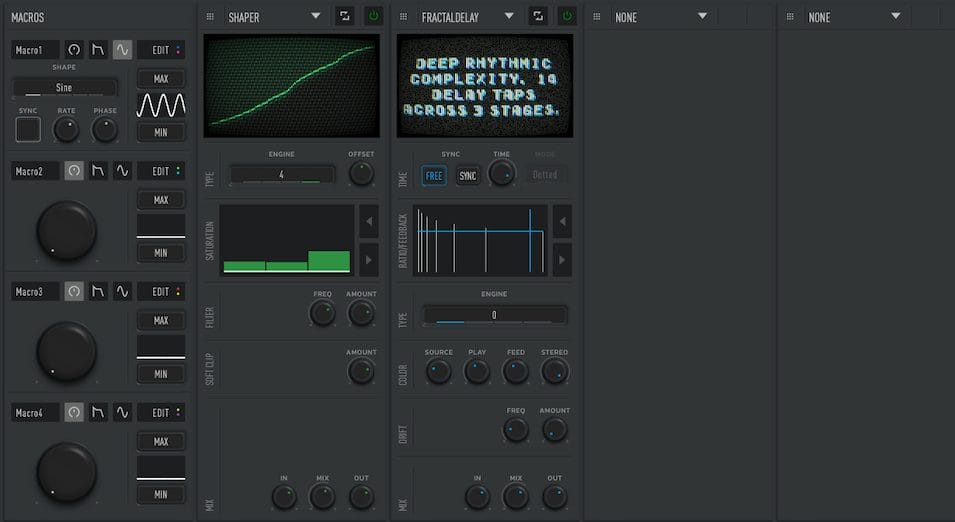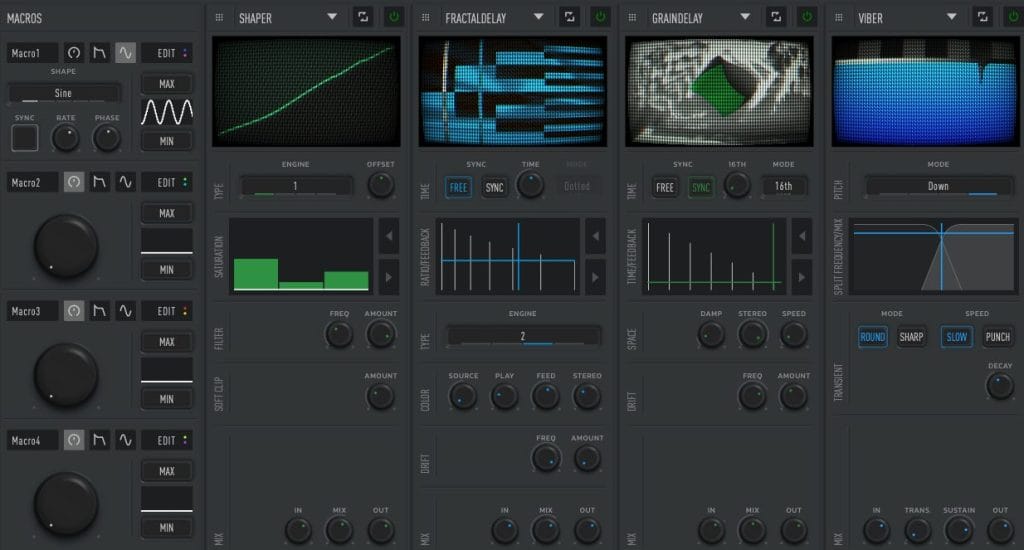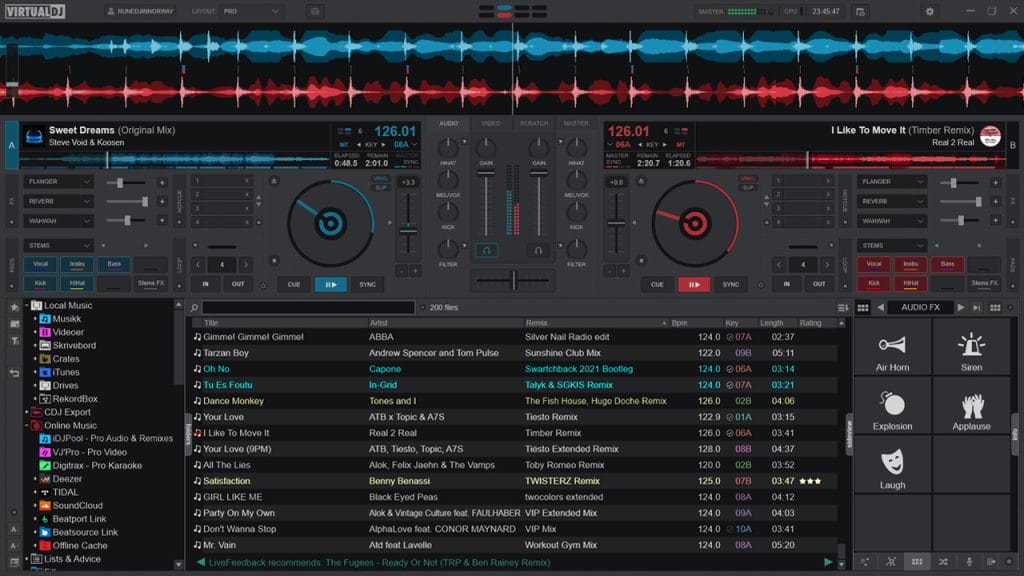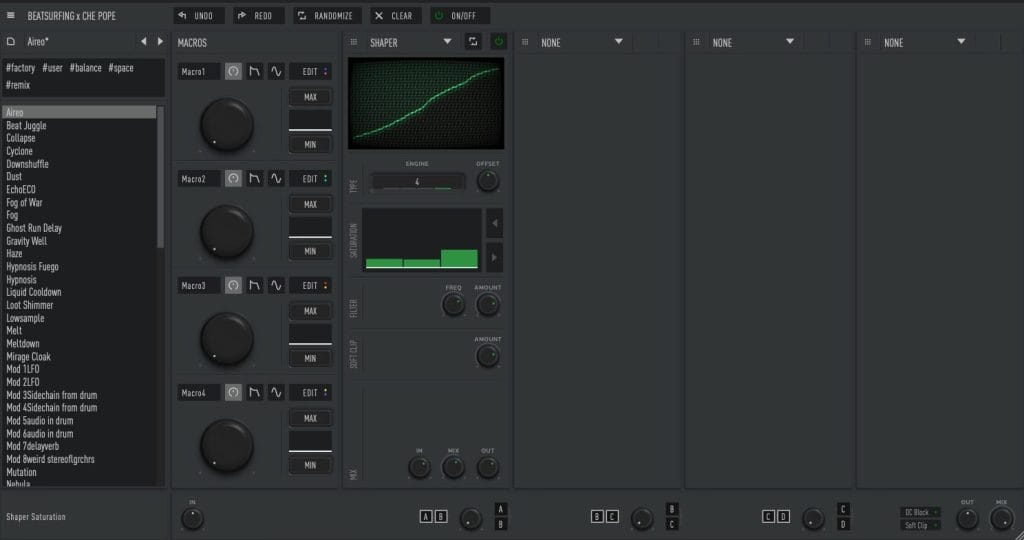Table of Contents
There’s been a lot of buzz surrounding CHEat code, BEATSURFING’s newest plugin made in collaboration with Grammy-nominated producer Che Pope.
This isn’t your usual effects plugin – it’s sixteen in one. It’s basically a sandbox for post-processing; you can add effects in any order you’d like, process them in any way you like, and route specific features to macros any way you’d like. Not only is it highly flexible, but it’s also creatively inspiring, for a specific reason that I’ll speak on in a little bit.
I’ll spare you all from any more background, as we’ve covered this plugin extensively recently. However, as always, this review is my fully honest opinion. After all, it’s my job as a music journalist to tell you whether or not to actually get these plugins. So, let’s talk about CHEat code.
Sixteen Modules, Endless Ways to Play
This is a very sleek, easy to understand plugin. Each of those four columns can fit one module, each of which has a set of processing options. I don’t have time, sadly, to get into each and every module’s processing options, but they really aren’t too hard to figure out.

Here are all of them. They include options for granular delays, saturation, reverb, distortion, splicing, and so much more. I did a quick try of all of them on their own, and they’re all solid – they’re really simple to use, as I said, and all clearly high-quality. But, you really do need to use several of these modules at once to get the most out of CHEat code. Otherwise, you’re not getting your money’s worth.

For example, now I’ve got my sound running through a shaper (which adds saturation and warmth) and a fractal delay. Now we’re getting somewhere. By the way, if you hover over the screens at the top of each module, you’ll get a quick description about what the plugin does and how to use it. I absolutely love the old-TV aesthetic that this plugin is going for, by the way.

Now, we’re really somewhere. Four effects on one sound. Each module routes into the next one either serially or parallel, or perhaps both. It’s not in this screenshot, but at the very bottom, you can actually crossfade between serial and parallel routing. That’s something I have genuinely never seen before.
We’re finally at the point in the review where we can talk about my favorite part of the plugin: the randomizer button. Click it on the very top of the plug-in or on the very top of an individual module, and you’ll completely randomize the parameters of either every module or just that specific module. This is where creativity truly gets inspired with this plugin. You no longer have to twist knobs and see what happens. You can just click that button and everything is instantly different. And, if you hate what it comes up with and want to go back, there’s an undo button, plus a redo button if you change your mind.

The last thing I’ll mention about the plugin is how great the macros are. You can apply almost any parameter (including the routing knob) to a macro and set the minimum and maximum amount that can be modulated on said parameter by clicking those buttons highlighted in the screenshot above and clicking directly on the parameter’s knob. You can also change the rate that each macro moves at, the shape at which it moves at, and the amount that each macro actually affects the sound.

Overall, I found every aspect of the plugin pretty simple and easy to use. But, is it even usable in a track, or is it a cool party trick to have?
Usage
Of course it’s usable in a track.
You can get some seriously cool sound design done just by throwing a bunch of random modules down and hitting randomize a few times. You can get even cooler sound design if you do that with a little bit of intention. And, if you add in the macros, you can get sounds that are only possible if you use this plugin. You can make endless delays, stutter-y atmospheres, and crushing distortions in a matter of seconds.
Below is a quick demo I made using a small piano melody. Each variation of the melody has a different instance of CHEat code on it, with four entirely randomized modules. These are all really cool starting points for further usage, and with some more processing could certainly be used in a finished track. Take a listen:
I think the third instance is my favorite – it uses the shufflers, which, to simplify them, make the audio it receives play out at unexpected times. I’m definitely looking forward to using this plugin more and seeing just what else it can do.
Pros and Cons
Pros:
There isn’t an equivalent on the market.
There isn’t another plugin out there quite like this one. Sure, there are other great reverbs, saturators, and delays on the market, but not one that takes all of those and more and blends them together in a highly-creative, easy to understand package. You’re getting something truly one-of-a-kind here.
The randomizer.
I absolutely love this thing. I must have hit it at least fifty times while trying this plugin out. It’s so fun and inspiring to see what you can end up with by just clicking a button – but make sure you don’t use it as a crutch!
Cons:
Not so much a con, but a suggestion.
If there was a way to apply a similar randomizer feature to the macros and have them completely randomize their motion, as well as what parameters they affect, that would be insane. I don’t know how feasible that is, but if there’s a team who can figure it out, it’s BEATSURFING’s.
Get your money’s worth!
CHEat code is 139 USD (but currently retailing at an intro price of $69), which I think is a fair price. However, if you get it any only use one or two of the modules or just hit the randomizer every single time you use it and don’t process your sounds further, you’re really not getting the most out of this plugin. You’re doing yourself a disservice if you don’t push this thing to its limits.
Conclusion: Should you get it?
I’m a big fan, so I’d recommend a purchase if you have the cash.
As I said earlier, there really isn’t something else like it on the market. If you’ve been looking for a one-of-a-kind sound design plugin that really pushes and inspires you to be creative, this is the one.
Buy CHEat code here.
The post CHEat code by BEATSURFING Review: A Crazy FX Plugin That Enforces Creativity appeared first on Magnetic Magazine.






